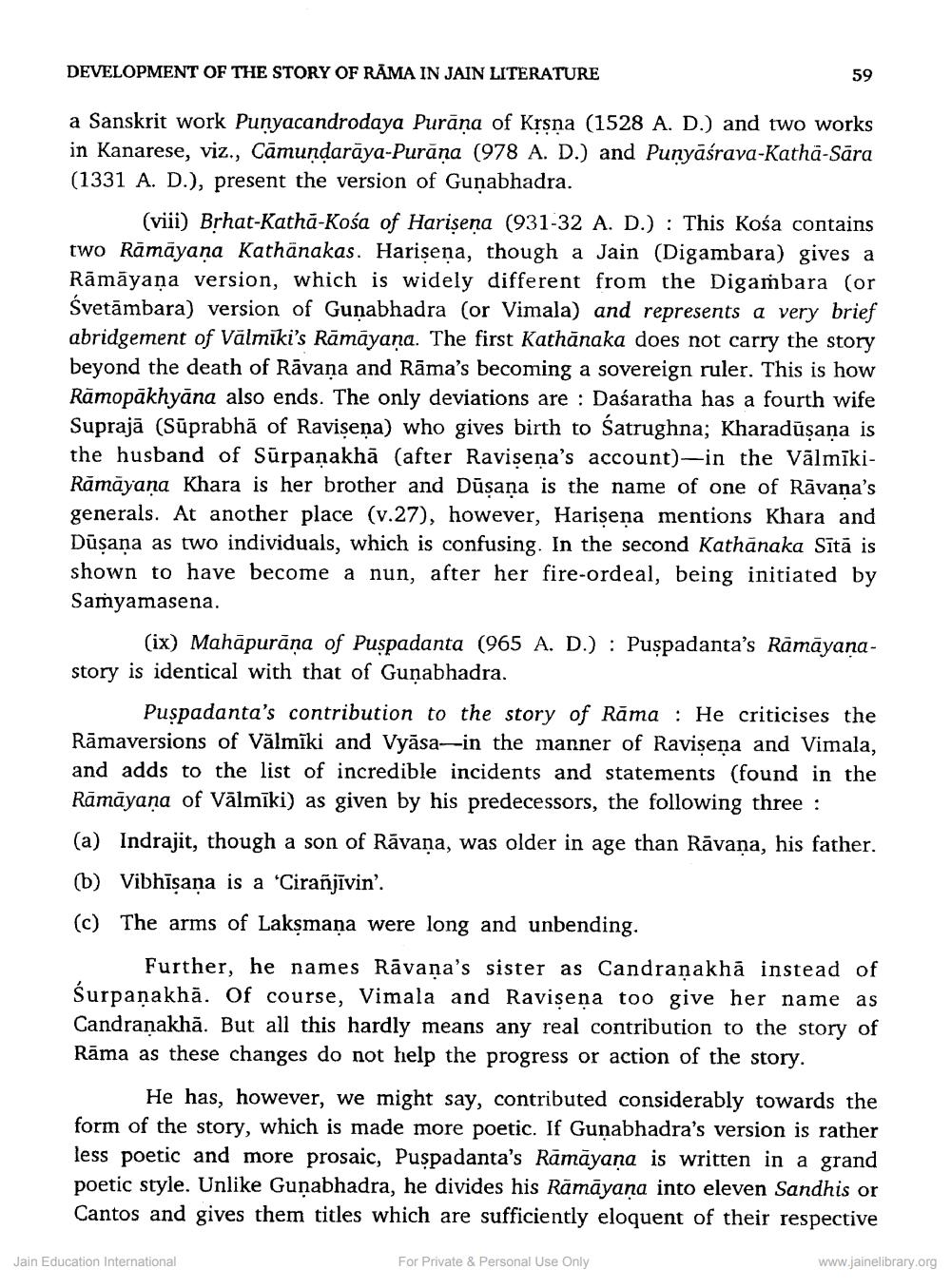________________
DEVELOPMENT OF THE STORY OF RĀMA IN JAIN LITERATURE
59
a Sanskrit work Punyacandrodaya Purana of Krsna (1528 A. D.) and two works in Kanarese, viz., Cāmundarāya-Purana (978 A. D.) and Punyāśrava-Katha-Sāra (1331 A. D.), present the version of Gunabhadra.
(viii) Brhat-Kathā-Kośa of Harisena (931-32 A. D.) : This Kośa contains two Rāmāyaṇa Kathānakas. Harisena, though a Jain (Digambara) gives a Rāmāyaṇa version, which is widely different from the Digambara (or Śvetāmbara) version of Gunabhadra (or Vimala) and represents a very brief abridgement of Valmiki's Rāmāyana. The first Kathānaka does not carry the story beyond the death of Rāvana and Rāma's becoming a sovereign ruler. This is how Rāmopākhyāna also ends. The only deviations are : Daśaratha has a fourth wife Suprajā (Sūprabhā of Ravişeņa) who gives birth to Satrughna; Kharadūṣaṇa is the husband of Sūrpanakhā (after Ravisena's account)-in the VālmīkiRāmāyana Khara is her brother and Dusana is the name of one of Rāvana's generals. At another place (v.27), however, Harisena mentions Khara and Dūsana as two individuals, which is confusing. In the second Kathanaka Sītā is shown to have become a nun, after her fire-ordeal, being initiated by Samyamasena.
(ix) Mahāpurāņa of Puspadanta (965 A. D.) : Puşpadanta's Rāmāyanastory is identical with that of Gunabhadra.
Puspadanta's contribution to the story of Rāma : He criticises the Rāmaversions of Vālmīki and Vyāsa–in the manner of Ravisena and Vimala, and adds to the list of incredible incidents and statements (found in the Rāmāyana of Vālmīki) as given by his predecessors, the following three :
(a) Indrajit, though a son of Rāvana, was older in age than Rāvana, his father. (b) Vibhīšana is a 'Cirañjīvin’. (c) The arms of Laksmana were long and unbending.
Further, he names Rāvana's sister as Candranakhā instead of Surpanakhā. Of course, Vimala and Ravisena too give her name as Candranakhā. But all this hardly means any real contribution to the story of Rāma as these changes do not help the progress or action of the story.
He has, however, we might say, contributed considerably towards the form of the story, which is made more poetic. If Gunabhadra's version is rather less poetic and more prosaic, Puspadanta's Rāmāyana is written in a grand poetic style. Unlike Guṇabhadra, he divides his Rāmāyana into eleven Sandhis or Cantos and gives them titles which are sufficiently eloquent of their respective
Jain Education International
For Private & Personal Use Only
www.jainelibrary.org




